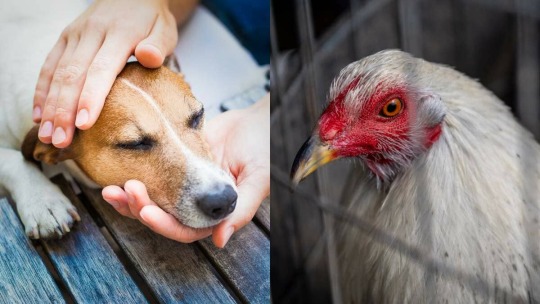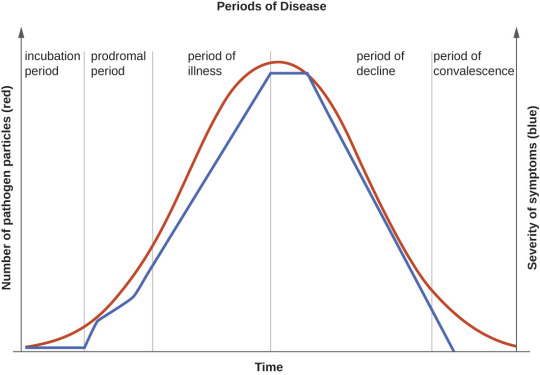#Avian influenza virus
Explore tagged Tumblr posts
Text
Heres How Bird Flu Can Cause You Severe Health Problems
In this article, we’ll explore how bird flu affects human health, the potential complications it can lead to, and why it remains a public health concern. Heres How Bird Flu Can Cause You Severe Health Problems Bird flu, also known as avian influenza, is primarily a viral infection that affects birds but can occasionally infect humans and other animals. While bird flu is relatively rare in…

View On WordPress
#Avian Influenza#avian influenza AH5N8#Avian influenza virus#bird feeding#bird flu#Bird flu alert#bird flu case#Bird Flu cases in India#Bird Flu Outbreak#bird flu outbreaks#bird flu virus#Bird flu viruses#H5N1#H5N1 avian influenza infections#H5N1 avian influenza virus#H5N1 bird flu#H5N1 variant#H5N1 Virus#H7N9#H7N9 bird flu#H7N9 strain#H7N9 virus#health india#health issues#health news#Here’s How Bird Flu Can Cause You Severe Health Problems
0 notes
Text
First case of human contracting H5N1 BirdFlu from a dairy cow confirmed: ‘The virus has jumped’
Scientists confirmed that a human has contracted the highly pathogenic avian influenza virus🦠 — not from a bird🐓, but a dairy🥛 cow🐄 🛟
351 notes
·
View notes
Text

The H1N1 influenza A virus is indeed the agent of the 1918 Spanish flu and the ancestor of all subsequent flu pandemics.
The 1918 virus is believed to be of avian (relating to birds) origin and adapted to humans.
The enigma of the 1889 - 1894 flu pandemic (Russian Flu)
https://www.ncbi.nlm.nih.gov/pmc/articles/PMC8813723/
The origin of the 1918 -1919 influenza virus
https://www.ncbi.nlm.nih.gov/pmc/articles/PMC1088558/
1918 Influenza (Spanish Flu): the Mother of All Pandemics
https://www.ncbi.nlm.nih.gov/pmc/articles/PMC3291398/
38 notes
·
View notes
Text
Impact of Low Pathogenic Poultry Viruses as Co-Infecting Agents
Impact of Low Pathogenic Poultry Viruses as Co-Infecting Agents @neosciencehub #neosciencehub #featured #sciencenews #lowpathogenicpoultryvirus #NIAB
Economic Implications & Management Strategies by Dr. Piruthiviraj “Low Pathogenic Poultry Viruses (LPPVs) represent a significant yet often underestimated challenge to the global poultry industry, particularly when they act as co-infecting agents with other pathogens,” said Dr. Piruthiviraj Kumar, Chief Technical Officer and Technical Director at Indsalus Biosolutions India Pvt Ltd and M/s…
#Chicken Anemia Virus (CAV)#featured#Fowl Adenovirus (FAdV)#Low Pathogenic Avian Influenza (LPAI) H9N2#Low Pathogenic Poultry Viruses#NIAB#sciencenews
0 notes
Text
H7 bird flu detected at third poultry farm in Australia
H7 bird flu was detected at a third poultry farm near Melbourne, but the Victoria state government claimed it was not the strain raising fears of human transmission.
The government also reported the destruction of hundreds of thousands of birds after detecting the flu at two Australian egg farms last month, according to Reuters.
The third farm is a few kilometres away from the first one that reported the infection. Both farms reportedly have the same strain of the H7N3 virus. The other farm, meanwhile, had the H7N9 strain, according to the state government.
Local authorities placed all three farms under quarantine with restrictions on travelling in surrounding areas, Graeme Cooke, Victoria’s chief veterinary officer, reported.
The detection of avian influenza at this additional property is not unexpected and is the result of ongoing surveillance activities within the Restricted and Control Areas.
However, the H7 bird flu outbreak poses no risk to consumers of eggs and poultry products, the government has assured. Since 1976, Australia has recorded nine outbreaks of Highly Pathogenic Avian Influenza (HPAI), all contained and stamped out.
In recent years, another strain of bird flu, H5N1, has swept around the world. It has also spread to dozens of mammalian species and through cattle herds in the United States. It has also infected three people in the US and one in Australia.
Australia recorded the first case of a child contracting the bird flu on May 22. Authorities speculate that he may have got the virus in India.
Read more HERE

#world news#world politics#news#australia#bird flu#bird flu virus#bird flu outbreak#avian influenza#avian flu#h5n1#influenza#h7
0 notes
Text
Digging through my bird guide books to help myself identify the group of little gray birds I briefly saw in Littleton and I accidentally find out the reason we haven't seen any cliff swallows at the wildlife rehab this year (they're adorable, we had plenty last summer) is because the nonstop cooler rainstorms and flash floods have likely starved their babies to death :((((
I've been theorizing the constant rainstorms and resulting swarms of mosquitoes/massively increased bug spray usage/sparse and late flower blooming were the reason for the dozens of hummingbirds we've gotten, many of which seemingly developed new neurological symptoms and passed away without explanation (developmental problems from contaminated insects, runoff, and nectar plus lack of flowers -> parents abandon the babies -> good Samaritans bring the doomed babies to us?). Plus other strange things like fledgelings going into torpor in random places in the daytime and dying from starvation.
We've had to deal with an insane amount of parasite bugs on our birds this summer, too. Countless birds of all ages absolutely infested with mites. Dozens and dozens of birds with flatflies, which most of us had never seen before, but now live in constant fear of carrying them like ticks to our pet birdies at home or finding them on the other animals in our care because they're so damn fast you blink and you'll never see them again (this is a Diptera hate blog for good reason).
I wonder whether the reason we've gotten more of some less common species is because they're also getting desperate from the storms and finding trouble instead of food/safe nesting areas. Most of the ones whose rescuers didn't try to keep them at least healed and were able to return to the wild. I hope they are wiser for it and survive to breed another year.
It would really suck if this summer's freak weather seriously impacts these and other bird populations in their winter homes. I'm kind of dreading next summer already ;-; here's to hoping the species diversity of our baby birds doesn't crash next year.
#for once there are no crazy wildfires in this state and for once the temp has mostly stayed below 100° but the one brief heat wave between#neverending series of storms killed off a lot of plant growth. west nile virus is getting pretty bad. and now the birds are dying#i mean they were already tangoing with avian influenza pandemic cant they get a break?#climate change amiright#ill actually bet this is due to the devastating wildfires in canada drifting smoke down the Rockies#the stormclouds forming from the hot heavy smoke. the air quality on the colorado front range is so awful despite the amount of rain#it hailed in random patches yesterday#maybe its not even the deet but whatevers in the canada ash in the water hurting the hummingbirds#yeesh. the wildlife will sure tell you when something is very wrong if youre listening#ornithology#birds#wildlife rehabilitation#science#zoology#ecology#conservation
0 notes
Text
What can I give to crows that is not food. Do they like shiny things?
#or maybe sticks for their nests?#I want to keep them on my good side but I have to stop feeding birds because of the highly pathogenic avian influenza virus
0 notes
Text

Lab-Created Bird Flu Virus Accident Caused by Risky ‘Gain of Function’ Research
USA TODAY reports: “This exclusive article is adapted from former USA TODAY investigative reporter Alison Young’s forthcoming book “Pandora’s Gamble: Lab Leaks, Pandemics, and a World at Risk,” which will be released April 25. In this excerpt, Young reveals for the first time details of a December 2019 lab safety breach involving one of the world’s most infamous lab-created “gain of function” viruses – and the efforts that were made to downplay the event, avoid notifying health authorities and oversight bodies, and keep the public and policymakers in the dark.
Inside the high-security Influenza Research Institute at the University of Wisconsin-Madison, two experienced scientists were pulling ferrets out of their HEPA-filtered cages on a Monday in December 2019. Another researcher, still in training, was also in the room to watch and learn.
One by one, the animals were put into a biosafety cabinet, where a solution was washed into their nostrils. It’s a procedure used to collect evidence of infection, and this particular experiment involved exposing the animals to a highly controversial lab-engineered strain of H5N1 avian influenza virus.
The virus they were working with that day was far from ordinary, and there should have been no room for the safety breach that was about to happen and the oversight failures that followed.”
Read more about the “lab-made bird flu viruses that alarmed scientists around the world.”
Take Action! Ban Gain-of-Function ‘Biomedical’ and ‘Biodefense’ Research!
#gain of function#virus#research#petition#pandemic#flu virus#h5n1#avian influenza#influenza#bio lab#bioweapons#virology
0 notes
Text
Avian Influenza Viruses
Avian Influenza, also known as bird flu, is a viral infection that affects birds, particularly poultry. The virus belongs to the family Orthomyxoviridae, which includes the human influenza virus. Although the virus primarily affects birds, it can also spread to humans and cause severe illness. In this article, we will discuss the different types of Avian Influenza, how it spreads, the diagnosis and treatment, prevention measures, and its impact on humans.READ MORE
0 notes
Text
Pet Dog Dies of Bird Flu After 'Chewing on a Wild Goose'
New Post has been published on https://petn.ws/W5jd3
Pet Dog Dies of Bird Flu After 'Chewing on a Wild Goose'

As a highly pathogenic variant of avian influenza continues to cause mass outbreaks and mortality in wild and domestic birds worldwide, another unfortunate animal casualty has emerged. A pet dog died of bird flu in Ontario, Canada this month, the country’s public health and food inspection authorities confirmed in a Tuesday statement. Mental Health Apps […]
See full article at https://petn.ws/W5jd3 #DogNews #AnimalVirology, #AvianInfluenza, #BirdFlu, #Environment, #Gizmodo, #GlobalSpreadOfH5N1, #Health, #HumanInterest, #Influenza, #InfluenzaAVirus, #InfluenzaAVirusSubtypeH5N1, #TreeOfLifeBiology, #Viruses
#Animal virology#Avian influenza#bird-flu#environment#Gizmodo#Global spread of H5N1#health#Human Interest#influenza#Influenza A virus#Influenza A virus subtype H5N1#Tree of life biology)#Viruses#Dog News
0 notes
Text
Avian Flu Kills 50 Million Birds In Record U.S. Outbreak
Avian Flu Kills 50 Million Birds In Record U.S. Outbreak
The USDA reported over 50 million birds have died amid a record-breaking outbreak of avian flu in the United States, affecting flocks in 46 states and surpassing a previous high set in 2015. What do you think? “I’m so glad there’s no flu for humans.” Ted Soto, Freelance Gate Agent “Nice to be able to just sit back and watch a pandemic for once.” Milo Sauls, Pepper Picker “This explains why we…
View On WordPress
#Agricultural health and safety#Animal virology#Articles#Avian influenza#Global health#Health#Human Interest#Influenza#Influenza A virus subtype H1N1#Latonya Meza#Milo Sauls#Pandemic#Pepper Picker#Ted Soto#The Onion#viruses
0 notes
Text

New Avian Flu Warning:
Infectious H5N1 bird flu virus survived milk pasteurization at 63°C and 72°C in lab tests, National Institutes of Health (NIH) and UCLA study finds, published in the New England Journal of Medicine on 14 June 2024.
-https://www.cbsnews.com/news/bird-flu-milk-pasteurization-nih-study/
-https://www.nejm.org/doi/full/10.1056/NEJMc2405488
2 notes
·
View notes
Text
A new study provides evidence that a spillover of avian influenza from birds to dairy cattle across several U.S. states has now led to mammal-to-mammal transmission—between cows and from cows to cats and a raccoon. "This is one of the first times that we are seeing evidence of efficient and sustained mammalian-to-mammalian transmission of highly pathogenic avian influenza H5N1," said Diego Diel, associate professor of virology in the Department of Population Medicine and Diagnostic Sciences and director of the Virology Laboratory at the Animal Health Diagnostic Center (AHDC) in the College of Veterinary Medicine. Diel is co-corresponding author of the study titled "Spillover of Highly Pathogenic Avian Influenza H5N1 Virus to Dairy Cattle," published in Nature.
Continue Reading.
129 notes
·
View notes
Text
Host Horizon of Clade 2.3.4.4B H5N1 Highly Pathogenic Avian Influenza Virus
Host Horizon of Clade 2.3.4.4B H5N1 Highly Pathogenic Avian Influenza Virus @neosciencehub #sciencenews #featured #neosciencehub #AvianInfluenzaVirus #HighlyPathogenicAvianInfluenzaVirus(HPAIV)
Implications for Control, as Presented by Dr. S. Nagarajan “The global spread of Highly Pathogenic Avian Influenza Virus (HPAIV) H5N1, particularly clade 2.3.4.4b, continues to pose significant challenges to the poultry industry, food security, and public health,” said Dr. S. Nagarajan, Principal Scientist at ICAR-National Institute of High Security Animal Diseases, Bhopal. Presenting his paper…
0 notes
Text
As the H5N1 avian influenza virus continues its rampage through U.S. dairy cow herds, it has also infected human farm workers. A different strain has also infected workers on poultry farms, most recently in Washington State. On Wednesday the U.S. Department of Agriculture announced that the virus had been detected in a pig for the first time at a farm in Oregon. Now, as the usual seasonal flu season approaches, some health experts wonder if it might give bird flu a dangerous boost.
44 notes
·
View notes
Text
Incubation Periods List
Hi all!
The following is a list of incubation periods for various infectious diseases for all your writing needs. An incubation period is the amount of time between exposure to an infectious agent (bacteria, virus, protozoa or prion) and the person having the first symptoms of the resulting illness. Knowing this is helpful in creating a timeline for your story.

Anthrax: Incubation period of 1-60 days
Avian Flu: Incubation period 3-9 days
Botulism: Incubation period 12-72 hours
Chikungunya: Incubation period 3-7 days
Chlamydia: incubation period 7-21 days
COVID-19: Incubation period 5-10 days
Creutzfeldt-Jacob Disease: Incubation period 10-20 years
Dengue: Incubation period 5-7 days
Diphtheria: Incubation period 2-5 days
Ebola: Incubation period 2-21 days
Hantavirus: incubation period 1-8 weeks
Hepatitis A: incubation period about 28 days
Herpes: Incubation period 2-12 days
Herpes Zoster/Varicella (Chickenpox): Incubation period 14-16 days
Herpes Zoster (Shingles): Incubation period- technically none, as this is a reactivation of the virus that causes chickenpox
HIB: Incubation period 2-10 days
HIV: Incubation period 1-6 weeks to prodrome, approximately 10 years to AIDS
Influenza: Incubation period 1-4 days
Legionnaires Disease: Incubation period 5-6 days
Leprosy: Incubation period 9 months to 20 years
Lyme Disease: Incubation period 3-30 days
Malaria: Incubation period 7-30 days
Measles: Incubation period 10-12 days
Meningitis, Bacterial: Incubation period 2-10 days
Meningitis, Viral: Incubation period 3-10 days
Monkeypox: Incubation period 1-2 weeks
Mumps: Incubation period 16-18 days
Norovirus: Incubation period 12-48 hours
Pertussis: Incubation period 7-10 days
Plague: Incubation period 2-8 days
Pneumococcal Pneumonia: Incubation period 1-3 days
Polio: Incubation period 7-10 days
Q-Fever: Incubation period 2-3 weeks
Rabies: Incubation period 20-90 days
RSV: Incubation period 4-6 days
Smallpox: Incubation period 7-17 days
Syphilis: Incubation period 10-90 days
Tetanus: Incubation period 3-21 days
Tuberculosis: Incubation period 2-10 days
Typhoid: Incubation period 6-30 days
Typhus: Incubation period 1-2 weeks
West Nile Virus: Incubation period 2-6 days
Yellow Fever: Incubation period 3-6 days
Zika: Incubation period 3-14 days
175 notes
·
View notes